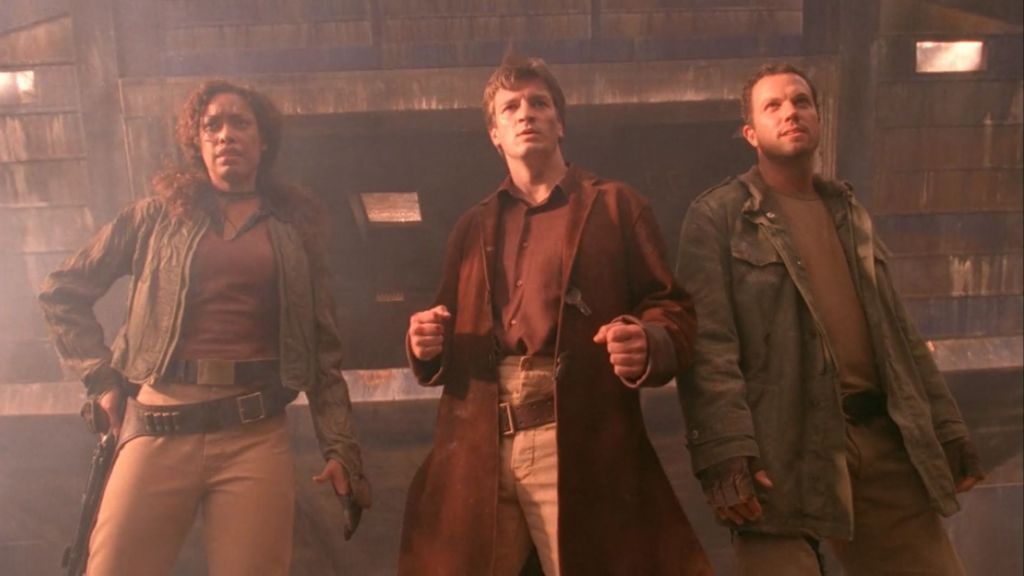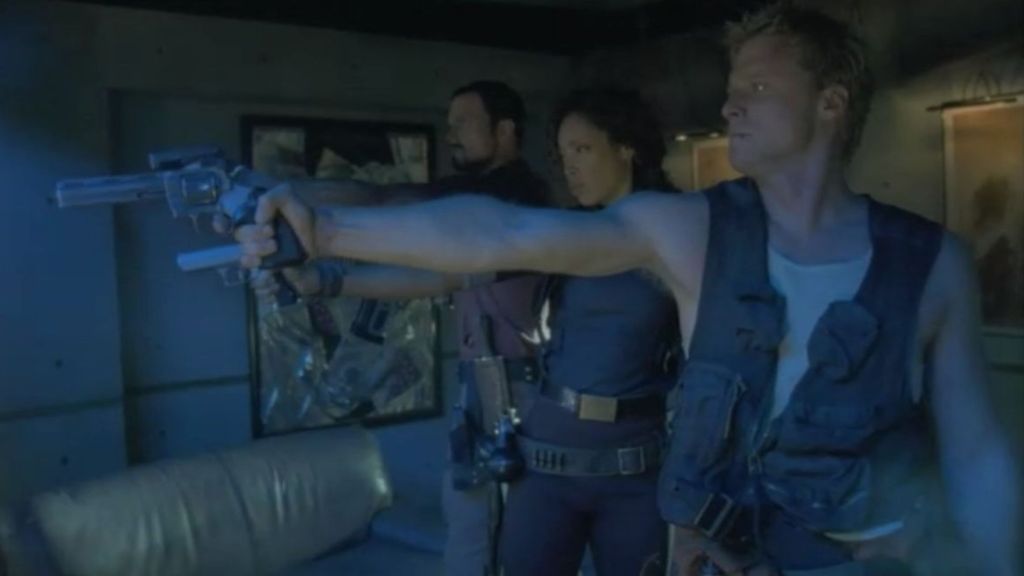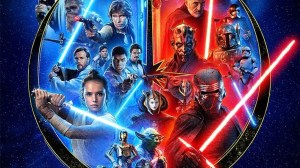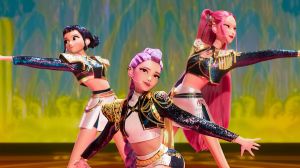Firefly was so beloved that its cancelation after only one season is almost as famous as the sci-fi show itself. Unlike many shows cancelled before their time, though, Firefly had a big enough audience to help keep the franchise alive. Due to fan demand, the crew came back together for Serenity, a movie designed to bring the story full circle, supposedly giving fans closure. It really wasn’t enough, which may explain why the story has continued in dozens of comics. There’s no denying the powerful impact Firefly had on its viewers, and that had a lot to do with how the show was, in many ways, ahead of its time.
Videos by ComicBook.com
First airing in 2002, Firefly was cursed from the start: episodes were aired out of order, and the pilot episode was nearly not aired at all. In the time before streaming services, it created a massive problem for the show and the community. This is one of several elements that seemed like ominous early signs, and ultimately played a part in why Firefly was canceled.
Firefly is a unique blend of genres, telling a story set in the far future (2517), in which humanity has taken to the stars. It doesn’t take long for viewers to realize this choice wasn’t all that voluntary, and that life hasn’t gotten a whole lot better for people without sufficient means. However, the heart of the show was always the cast, a ragtag crew led by Nathan Fillion’s Captain Malcolm ‘Mal’ Reynolds. Two decades later, their stories still resonate with viewers, and part of that was because they were so innovative at the time.
1. Making the Sci-Fi Western Theme Work

As mentioned earlier, Firefly was a standout show, boldly creating a unique blend of genres, which included sci-fi and Western elements. The story may have been set in the far reaches of space, complete with technology almost beyond our imagination, but many core elements have a strong Western feel. There was the classic battle for survival, complete with shootouts, Dust-Bowl era concerns about food, and frontier life. The only difference is that all of this was happening on distant planets or moons.
A sci-fi Western isn’t all that unusual these days, and the success of The Mandalorian proves the fan reaction. However, at the time Firefly came out, this idea felt like a huge risk. Firefly took the gritty aesthetic of life on the frontier and merged it with space technology. The result is a world that feels advanced yet old, where even the amazing technology is crumbling away. It was the perfect setting, as it served as a constant reminder of the plot’s core premise. The people who have it all live in luxury, while people who don’t, such as the crew of Serenity, are struggling to live on the scraps.
2. A True Found Family

Who doesn’t love the found family trope? Firefly was hardly the first to play around with this concept, but it did bring in many unique details and tones, bringing the concept farther than viewers had previously seen. For example, Star Wars and Star Trek both had strong found family elements, but these points are often secondary to the plot itself. Meanwhile, Firefly often made the found family trope the centerpiece of the show. It was another bold move, but the characters were strong enough to carry this decision.
Here’s what made Firefly‘s found family stand out – like any family, there was a level of dysfunction. Despite that, the crew stayed together. This wasn’t a friend group having a spot of drama, but real clashes (the type that could have gotten somebody killed, if they weren’t so lucky). Likewise, the crew builds bonds on trauma and survival. They weren’t sticking around merely because of chemistry, but because of what they survived together. In other words, every survived adventure seemingly made the family bond stronger.
[RELATED: Firefly Prequel Series Announced]
3. Strong Female Characters

These days, it’s easy to take the phrase “strong female character” and mistake it for the need to make a female role powerful and combative. Firefly understood that strength comes in many forms, and thus enabled the cast to show the varying types of strength a person can carry. Likewise, the show played with classical female archetypes, but that wasn’t the sole definition of any one character.
Zoe Washburne is the second-in-command of the Firefly, and there’s never any room for doubt about her competency. She’s battle-hardened and completely faithful. She falls under the Warrior archetype, portraying strength and honor in equal measure. Yet she’s also a doting wife who fell in love with a goofy pilot.
Next is Inara Serra, who originally wasn’t an official member of the crew. She was renting one of Serenity’s shuttles, but with time, she grew to be a proper (and cherished) member. She’s the classic Seductress role, meaning she has hidden sides, giving her an air of mystery. Inara is vibrant, dignified, and extremely emotionally aware of herself. She carries a level of power often devalued by society.
Kaylee Frye may appear to be a classical tomboy on the surface, and that’s because she fits a similar archetype. She’s youthful and jubilant, but she cares deeply for others. This may make her feel naïve at times, but it’s her trust in the world that enables her to act so freely. It would be a mistake to call her dumb, though, as she’s mechanically gifted and the heart of the crew.
Finally, there’s the latest addition to the crew – River Tam. River is a tortured teenager, who was originally a child savant targeted because of her intelligence and abilities. Because of the trauma, River often comes off as childlike or out of control, but she’s remarkably self-aware. Despite her appearance, River is not some damsel in distress.
4. Mental Health & Trauma Portrayals

When we’re talking about mental health in Firefly, the first character to come to mind will be River Tam. As already mentioned, she was tortured by an evil organization who messed with her brain, putting her into psychic overload. She was often prone to dissociation, bursts of fear or violence, or sensory overload. These are integral parts of River’s character, yet the show never shamed her. While some characters may express varying degrees of concern, the rest are more focused on letting River be who she is.
River isn’t the only example to consider, as in a way, each member of Serenity has some trauma to cope with. For example, Simon (River’s brother) is a pretty clear example of caregiver burnout. He’s a perfectionist who’s always focused on his sister’s well-being, often neglecting his own health in the process.
Then there’s Malcolm Reynolds, the Captain who carries his weight in guilt. There’s no denying his PTSD, as it comes out in many ways (including the famous example about the apple). He also probably has survivor’s guilt, much like Zoe. Jayne struggles with a form of toxic masculinity, as he feels he can never express any form of vulnerability, while Inara makes it clear that she’s never felt at home with anybody outside the Firefly crew. There’s also an implication that something is going on medically with Inara, but the show’s cancellation prevented viewers from learning more.
5. Anti-Capitalist Messaging

As with the sci-fi meets Western aesthetic, an anti-capitalist message isn’t new, especially not in the world of sci-fi. What made Firefly stand out in this arena is how unapologetically upfront it was about this point. The core of the show, down to its gritty aesthetic, teased the truth, evoking a strong feeling of struggle and survivalism. All of which serves as a reminder of the crushing weight of bureaucracy, especially those often forgotten on the sidelines.
There are many ways in which Firefly drove this point home. First, there’s Serenity; the ship held together by spit and a prayer (and the skills of Kaylee, of course). Plus the crew has to take on low-paying and high-risk jobs, else they risk drawing the attention of the capitalist government. On that note, the Alliance is heavily implied to be an imperialist bureaucracy with technocratic levels of control. River’s treatment is an extreme example of human treatment in this universe, but she’s far from an uncommon example.
[RELATED: 7 Must-See Shows If You Loved The Expanse]
6. Didn’t Force Happiness Into the Plot

In truth, anti-capitalism is only one of Firefly‘s messages. The show let the characters carry the story (more on that in a moment), and as such, it never felt the need to force the characters to be happy. Were they allowed to be happy? Absolutely! But it never felt like a forced point. If Kaylee was having a great day, celebrating the crew’s success in finding fresh fruit, that felt real. Simultaneously, it felt right when the crew was experiencing sadness or pain. These characters went through a lot, including losing those near and dear to them.
To put it another way, the characters were allowed to wear their emotions proudly. When Zoe and Mal were having a bad day, thanks to memories of the war, they let that show. If Wash was feeling left out, that came out in the conversation. The same can be said for Jayne’s frustration or River’s confusion. In a show about characters that felt human, it was important to let them portray human emotions.
7. Character-Driven Stories Spread Across the Team

The cast of Firefly isn’t exactly small, consisting of nine crew members: Mal, Zoe, Wash, Inara, Jayne, Kaylee, River, Simon, and Shepherd Book. Here’s where it gets interesting, as Firefly leans into character-driven plots, and that is shared across the main cast. While it might feel safe to assume that Mal, the Captain, is the leader and the plot’s center, that isn’t entirely accurate. He gets a lot of screen time, but this is because he’s often seen supporting the rest of the cast as needed. To put it another way, there’s no singular protagonist for the series.
Every episode of Firefly plays around with different backstories and elements of the core plot. “Out of Gas” deals with Mal’s past trauma, while “Ariel” focuses on Simon and River. Then there’s “War Stories“, which involves Zoe and Mal’s past, but is also about Wash’s feelings on the matter. Finally, “Jaynestown” puts Jayne’s darker past into the forefront. In each story, viewers got to learn something new about the cast. Had the show continued, we likely would have had the mysteries revolving around Book and Inara answered; instead, fans will always be left with theories.








